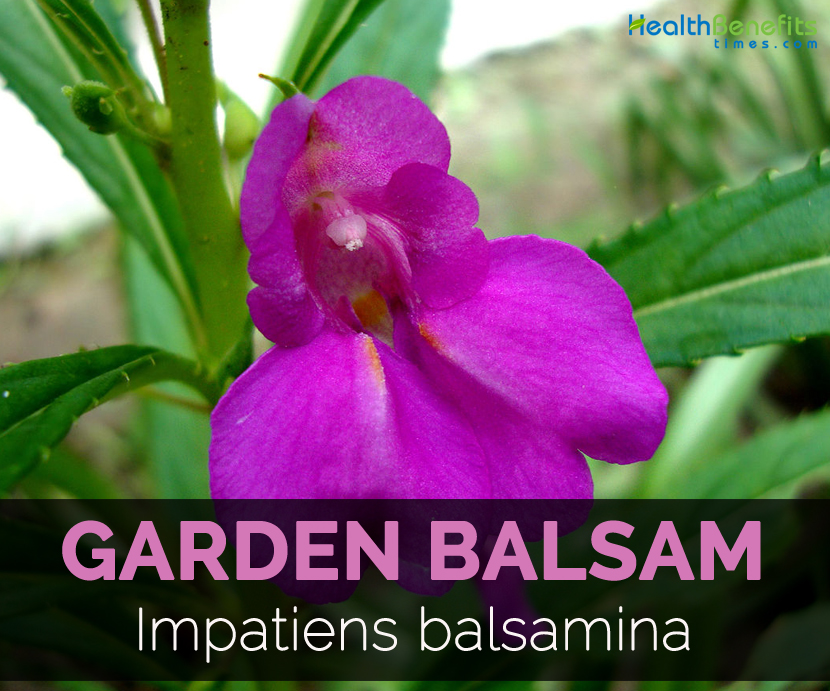| Garden Balsam Quick Facts | |
|---|---|
| Name: | Garden Balsam |
| Scientific Name: | Impatiens balsamina |
| Origin | This species is indigenous to southern Asia in India and mainland Southeast Asia. It is has been introduced into South China, southern Europe and Turkey. |
| Shapes | Elliptic to fusiform, 1.2-1.4 mm long |
Traditional uses
- The plant is used for treating diseases and skin problems.
- Juice extracted from leaves is useful for treating snake bite and warts.
- Apply the flower to burns.
- In Asia, it is used for fractures, rheumatism and other health problems
- It is used in Korean folk medicine for treating gastritis and constipation.
- In China, the plant is used for treating bites of snakes and who ingested poisonous fish.
- The pulverized dried stalks, juice from stalk and paste made from flowers are used for treating various health ailments.
- The plant extract is used by Vietnamese to wash their hair in order to stimulate hair growth.
- Medicinally, seeds and stem are used to promote blood circulation and to provide relief from sore throats.
- In Asia, Garden balsam is used for treating fractures, rheumatism and fingernails.
- In Bangladesh, flowers are used for treating neuralgia, lumbago, scalds and burns.
- Apply the white petals juice topically for urticarial and dermatitis.
- In Philippines, leaves are used in poultice for dissolve felons.
- Leaves are used in Malaysia as a poultice for broken and torn nails.
- Root decoction is used in Brunei for irregular menstruation.
- Leaf juice is used to treat warts.
- Seed powder is provided to women during labor for providing strength.
- Flowers are used in Korea to produce an orange nail varnish.
Precautions
- Allergic people should avoid it.
- Use it in moderate amounts.
- Consult the health practitioner before treating health ailments.
How to Eat
- Petals are made into balls, dipped in a batter, shallow fried and cooked in a curry with sliced potatoes.
- Seeds powder is added to tea.
- Seeds are cooked or consumed raw.
- In China, shoots and leaves are cooked and consumed.
References:
https://www.itis.gov/servlet/SingleRpt/SingleRpt?search_topic=TSN&search_value=29185#null
http://www.hear.org/pier/species/impatiens_balsamina.htm
https://en.wikipedia.org/wiki/Impatiens_balsamina
https://www.cabi.org/isc/datasheet/28765
Awesome
Comments
comments
